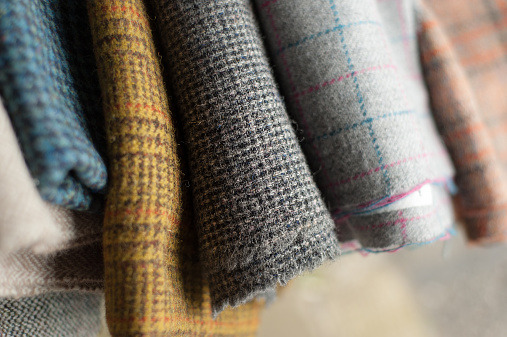
Have you ever read the description of a sportcoat or pair of jeans and nodded, impressed, at the fabric weight? 12 ounces. 14 ounces. 19 ounces? But what does that mean? Confounded by conflicting answers online, I asked some knowledgeable friends. And they… weren’t quite sure. So I had to ask someone who actually knows things, Jeffery Diduch of Tutto Fatto a Mano. A true student of suitcraft, Diduch has worked with many, many ounces of cloth.
The “weight” of the fabric? “Typically, that’s the weight of a linear yard or meter,” says Diduch. “That’s 60 inches or 150 centimeters wide.” So if you’re buying suiting by the “yard,” a yard should weigh X ounces. Easy enough.
Does fabric weight have a bearing on quality? “Only in so much as a heavier fabric can usually take more of a beating. Unless you’ve handled a lot of cloth or are used to handling swatchbooks, you wouldn’t know what 9 ounces feels like versus 19 ounces.” Heavier fabrics can also be easier to handle for a tailor. At least for tailored clothing, most suitings are in a relatively narrow range. Diduch puts the average modern cloth weight at 9 ounces or so, and says he likes 9 ounces for summer suits and 11 for winter, maybe up to 14 ounces for tweeds.
When it comes to non-tailored clothing, like jeans or shirts, cloth weight can be more important to the feel of finished product, because those items have less behind-the-seams guts than a sportcoat–fewer trimmings and finishing details that can make a jacket seem heavy even if the cloth is on the lighter end. But the weight? That number means roughly the same thing, no matter the garment it’s cut into.
–Pete